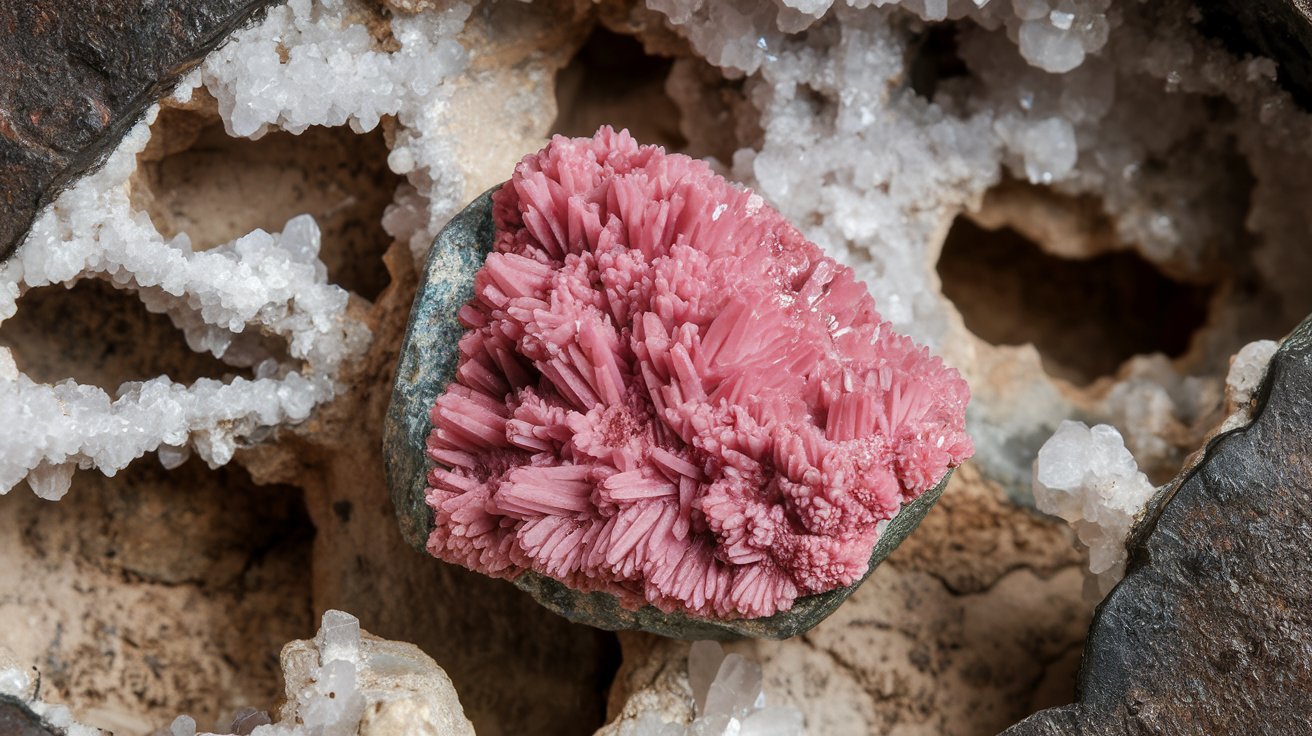
What is Ziesite? Ziesite is a rare mineral that fascinates geologists and collectors alike. Found primarily in volcanic regions, this mineral boasts a unique chemical composition of copper vanadate. Its striking blue-green color makes it a standout in any collection. But there's more to Ziesite than just its appearance. This mineral forms under specific conditions, often in association with other vanadium minerals. Why is Ziesite important? Understanding Ziesite can provide insights into geological processes and the environments where it forms. Whether you're a seasoned geologist or a curious enthusiast, learning about Ziesite can deepen your appreciation for Earth's natural wonders. Ready to dive into 30 intriguing facts about this captivating mineral? Let's get started!
Key Takeaways:
- Ziesite is a rare mineral with unique properties, primarily found in the United States. It's small, green crystals make it a favorite among collectors and a valuable subject for scientific research.
- Despite its challenges, studying Ziesite provides insights into geological processes and the properties of copper vanadate minerals. Its rarity and small size make it a fascinating and valuable subject for mineralogists and collectors.
What is Ziesite?
Ziesite is a rare mineral that has intrigued geologists and mineral enthusiasts alike. Its unique properties and limited occurrence make it a fascinating subject of study. Here are some intriguing facts about this mineral.
-
Ziesite is a copper vanadate mineral, meaning it contains both copper and vanadium in its chemical structure.
-
The mineral was first discovered in 1959 by mineralogist Charles Zies, after whom it is named.
-
Ziesite typically forms in oxidized zones of vanadium-rich hydrothermal deposits.
-
It is often found in association with other minerals like volborthite and corvusite.
-
The mineral's chemical formula is Cu2V2O7, indicating it contains two copper atoms and two vanadium atoms per molecule.
Physical Properties of Ziesite
Understanding the physical properties of Ziesite can help identify it in the field. These properties also contribute to its rarity and uniqueness.
-
Ziesite crystals are usually small, often less than 1 millimeter in size.
-
The mineral exhibits a monoclinic crystal system, meaning its crystal lattice is shaped like a skewed rectangle.
-
It has a Mohs hardness of 3.5, making it relatively soft compared to other minerals.
-
Ziesite has a vitreous to dull luster, giving it a glass-like appearance.
-
The mineral is typically green to blue-green in color, which is characteristic of many copper-containing minerals.
Occurrence and Locations
Ziesite is not commonly found, making its discovery a notable event for mineral collectors and geologists. Here are some key facts about its occurrence and locations.
-
The mineral is primarily found in the United States, particularly in Arizona and Utah.
-
One of the most famous localities for Ziesite is the Monument No. 2 mine in Arizona.
-
It has also been reported in the vanadium-rich deposits of the Colorado Plateau.
-
Outside the United States, Ziesite occurrences are extremely rare.
-
The mineral is often found in small quantities, making large specimens highly prized by collectors.
Uses and Applications
While Ziesite is not widely used in industrial applications, it holds significant value for scientific research and collectors.
-
The mineral is primarily of interest to mineralogists studying copper and vanadium deposits.
-
Ziesite specimens are highly sought after by mineral collectors due to their rarity and unique properties.
-
It can also be used in educational settings to teach students about mineralogy and crystallography.
-
The study of Ziesite can provide insights into the geological processes that form vanadium-rich hydrothermal deposits.
-
Despite its limited practical applications, Ziesite remains an important mineral for scientific research.
Interesting Facts about Ziesite
Beyond its basic properties and occurrences, Ziesite has some fascinating aspects that make it a subject of interest.
-
Ziesite was initially mistaken for another mineral, volborthite, due to their similar appearance.
-
The mineral's name honors Charles Zies, who made significant contributions to mineralogy.
-
Ziesite is often found in the form of tiny, well-formed crystals, making it a favorite among micromount collectors.
-
The mineral's green color is due to the presence of copper in its chemical structure.
-
Ziesite is often studied alongside other copper vanadate minerals to understand their formation and properties.
Challenges in Studying Ziesite
Studying Ziesite presents several challenges due to its rarity and small crystal size. These challenges make research on this mineral even more valuable.
-
The small size of Ziesite crystals makes them difficult to analyze using standard mineralogical techniques.
-
Its rarity means that researchers often have limited samples to work with.
-
The mineral's softness can make it challenging to prepare samples for microscopic analysis.
-
Ziesite's similarity to other minerals can lead to misidentification, complicating research efforts.
-
Despite these challenges, advances in analytical techniques continue to improve our understanding of Ziesite and its properties.
The Final Word on Ziesite
Ziesite, a rare and fascinating mineral, holds a unique place in the world of geology. Its striking blue color and rarity make it a prized specimen for collectors and researchers alike. Found primarily in the Tsumeb Mine in Namibia, ziesite's composition includes copper and vanadium, giving it its distinctive hue. This mineral not only captivates with its beauty but also offers insights into the geological processes that create such wonders. Whether you're a seasoned geologist or just someone with a curiosity for the natural world, ziesite is a reminder of the Earth's incredible diversity. So next time you come across a piece of this rare mineral, take a moment to appreciate its journey from deep within the Earth to your hands. It’s a small but significant part of our planet's rich tapestry.
Frequently Asked Questions
Was this page helpful?
Our commitment to delivering trustworthy and engaging content is at the heart of what we do. Each fact on our site is contributed by real users like you, bringing a wealth of diverse insights and information. To ensure the highest standards of accuracy and reliability, our dedicated editors meticulously review each submission. This process guarantees that the facts we share are not only fascinating but also credible. Trust in our commitment to quality and authenticity as you explore and learn with us.


